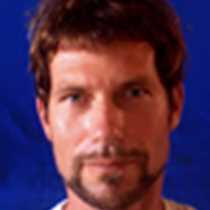Floreana
We all wake up at first light this morning for a pre- breakfast visit to Post Office Bay. There is a light drizzle at first, but when we disembark the sun is already more up and the haze disappears. The bay we are anchored is dead calm. You can see the reflections of the island’s eroded cones and cliffs in the water.
Post Office has the last working ‘post barrel’ in the world, an old-fashioned mail system where the visitor not only leaves but also delivers mail. At first solely used by English whaling vessels, nowadays the barrel is filled with postcards from visitors of all nationalities. The tradition demands that the card you select from the barrel must be hand delivered to the recipient. I still wait for the person who collects destinations all over the world, delivers the postcards in one voyage, and writes a book about all this.
We had breakfast and headed for Champion, a satellite island of Floreana which holds, among many other animal and plant life, a small population of endemic mocking birds. We counted six individuals from the Zodiac, since we cannot land on Champion. Next to mockingbirds we tick off swallow tailed gulls, red billed tropic birds, Galápagos shearwaters, finches, sea lions and very beautiful cacti. This Zodiac ride is the warm up for the snorkeling which we do at the same site. We see many different reef fish, but the true attraction here are the numerous sea lion pups, frolicking, chasing, mimicking and doing much more while we just hang with them, feeling clumsy but fascinated by these wonderful creatures.
After a good lunch and siesta there is time for some kayaking, where we see a big shark, many blue footed boobies, frigate birds and black sea turtles. At 1600 it’s time for a hike, starting at the ‘green’ beach, called so because of the mineral deposits, and directly we see some small tree finches, flycatchers, yellow warblers, a stilt, pintail ducks, flamingos and lava lizards. The flora is clearly in a much better state than the last three years, when a severe drought was making this place look very grey and lifeless. Now we see many flowering endemic plants, a lot of perennials and many bird nests. A flycatcher tries to get nesting material in the form of human hairs.
We also walk to a beach where we find flowering club leaf, radiate headed Scalesia, and Macraea. In the ocean we spot golden rays. Higher on the beach we count many turtle nests. After a moment of zen we walk back to see the flamingos one more time, this time in the yellow streaking light of the late afternoon, and at 1745 we take the Zodiac back to the ship looking at a fabulous sunset.
What a beautiful day, again!




